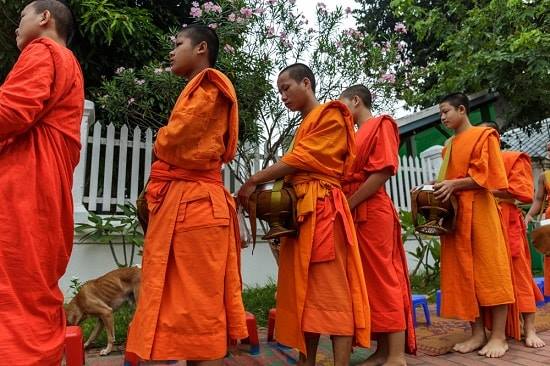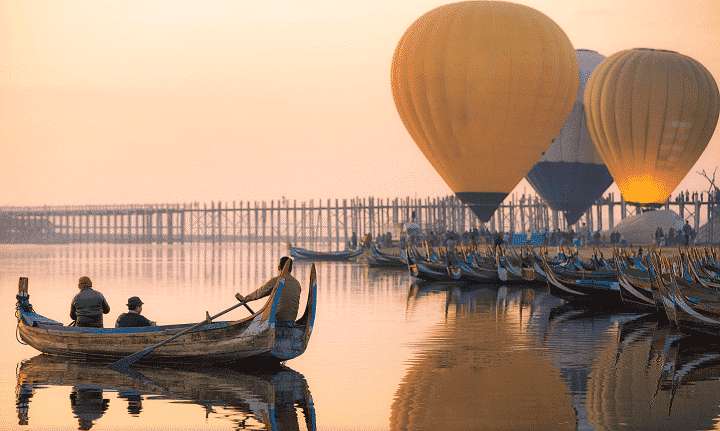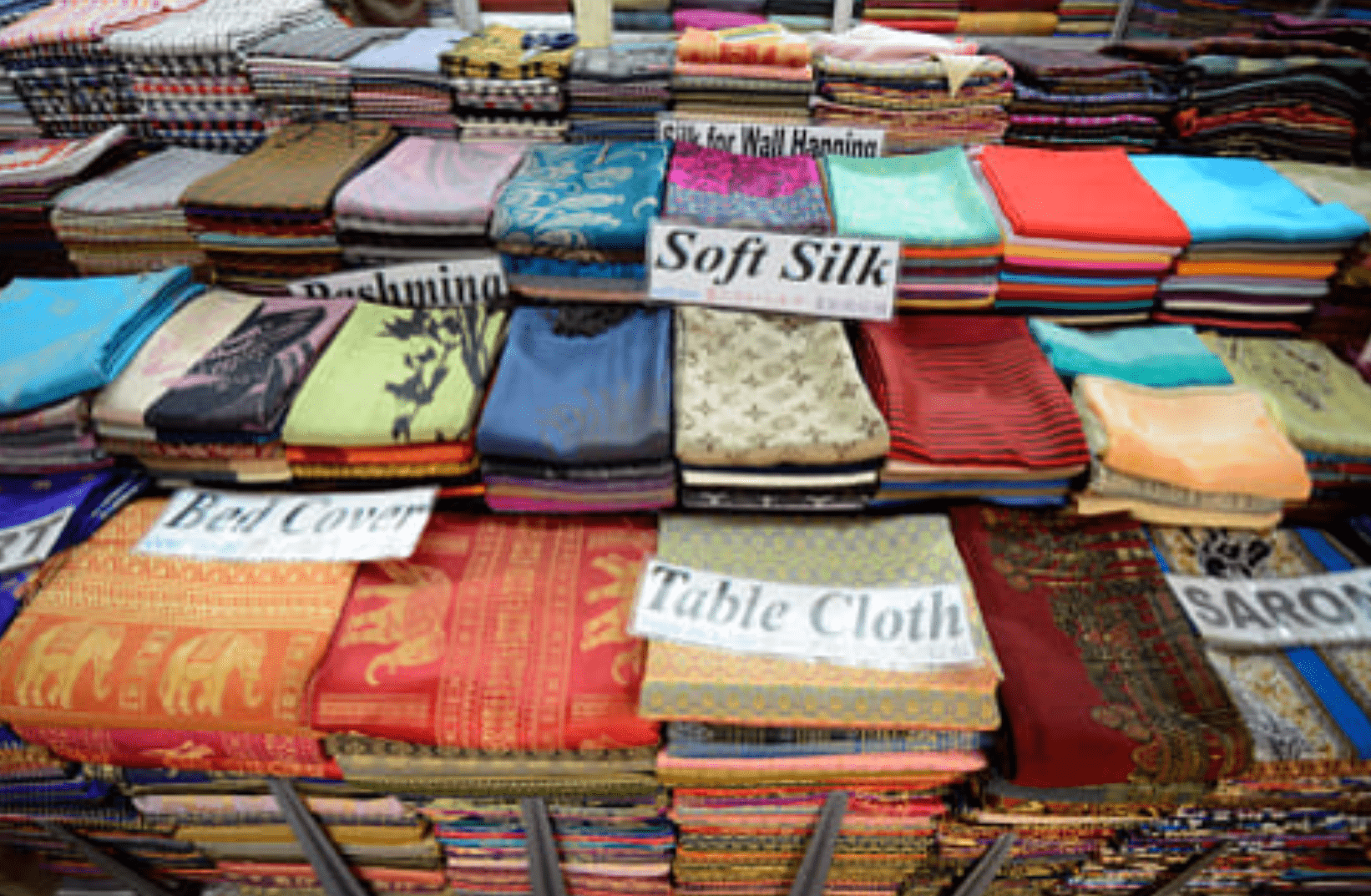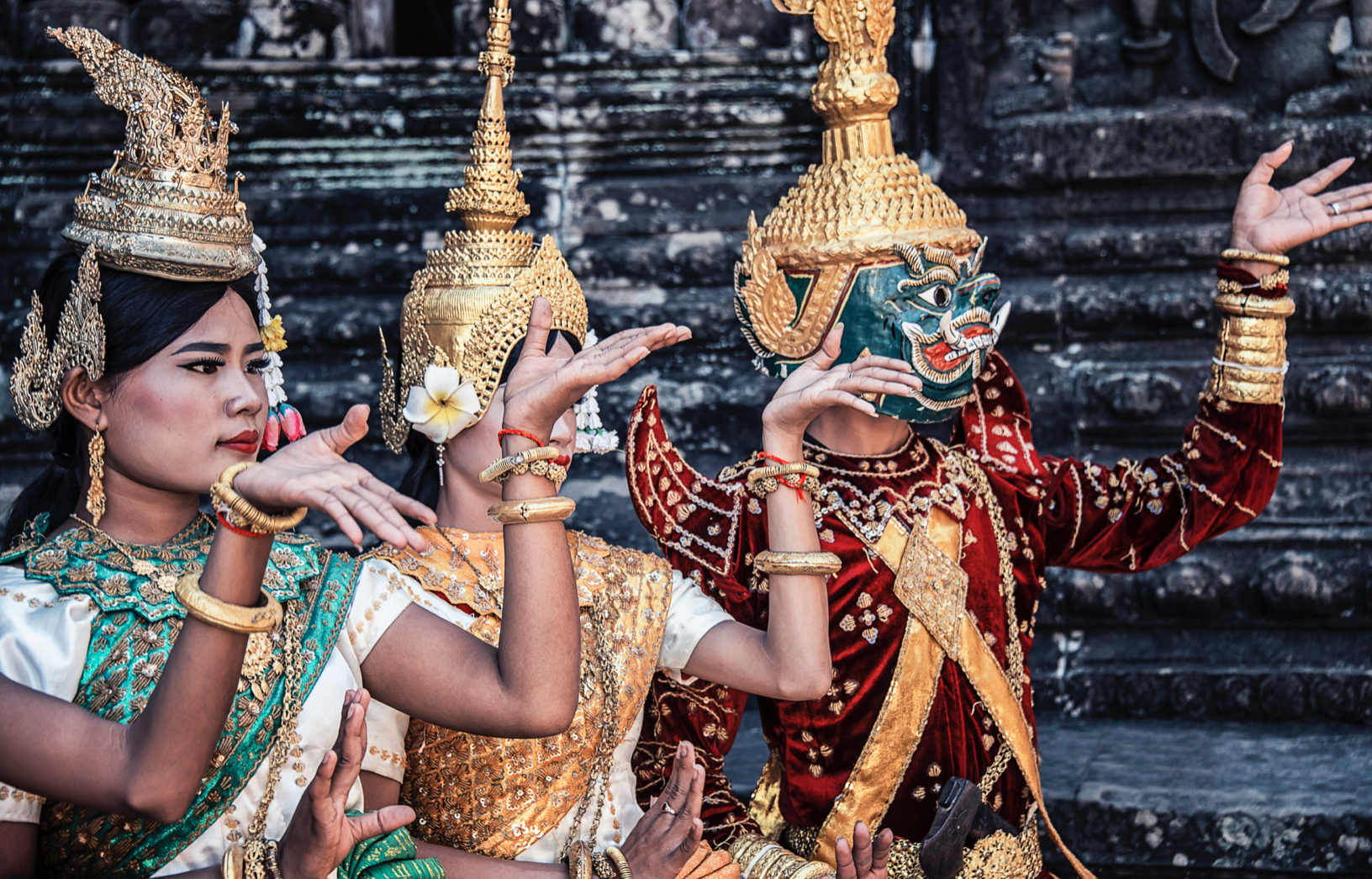CAMBODIAN ARTS & CRAFTS
Traditional Cambodian hand-crafts and arts include silk weaving, stone sculpture, wood carving, marble and pottery arts, wall murals depicted on the Angkor Wat temples, baskets made with straw and bamboo and kite making. Speaking about Cambodia, a country that is home to some of the most unique arts and handicraft that is inspired by the country’s Khmer culture throughout the history. Because the arts and crafts are part of the daily life of the Cambodian, most farmers have expanded their business by weaving silk, making silkworms and raising silkworms in order to produce silk. In recent years, the number of sculptors and painters has grown. In addition, a unique Khmer style arts we see today is a combination of culture animistic beliefs which is originated by the religions of Hinduism and Buddhism of India.
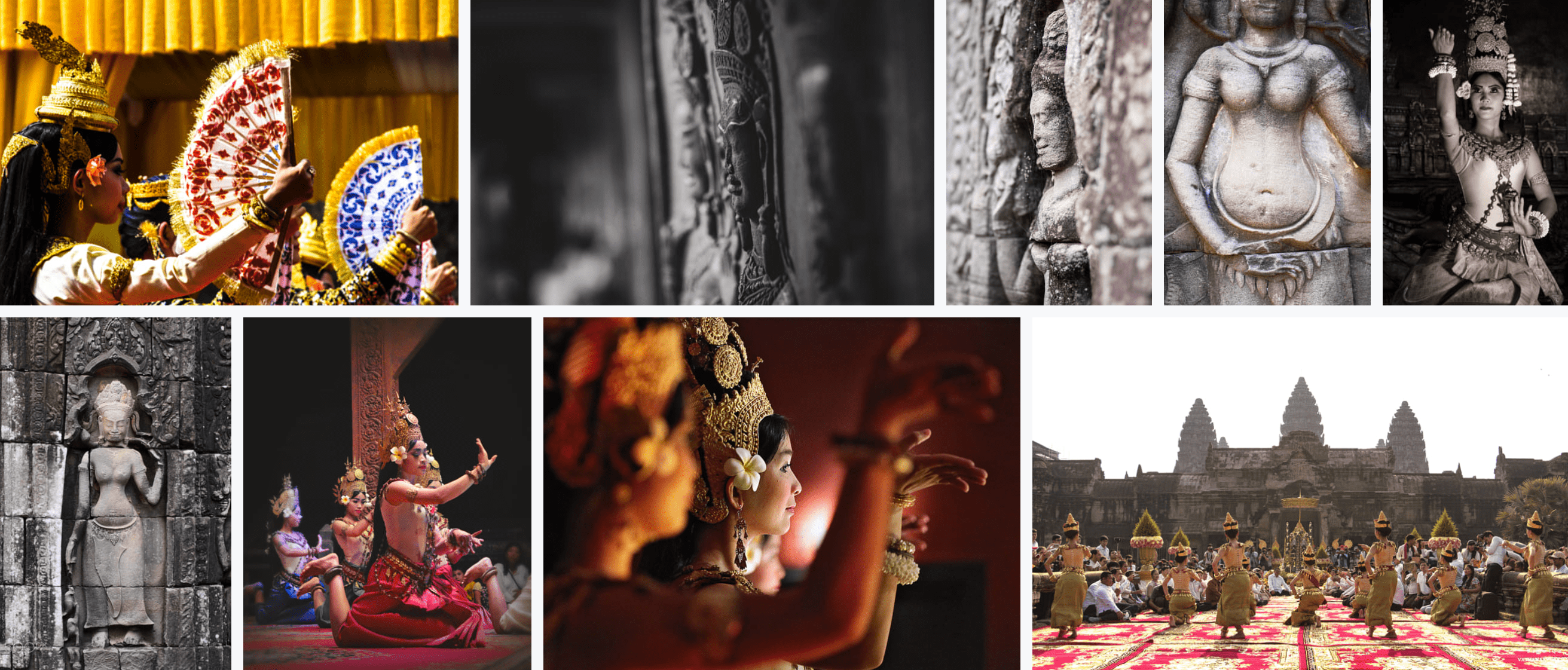
Apsara dance inspired by the bas reliefs of Angkor Wat temples
Khmer silk waving and Art designs
The art of silk weaving in Cambodia has contributed together with history of the nation and specially it has grown much more since the beginning of the first century, when textiles were used in the trade, whereas modern textiles have continued to follow tradition and crafts since ancient times. And produce beautiful arts depicted as a bas-reliefs on the statues of the Khmer ancestors. Nowadays, due to the needs and demands of the tourists, you will find out the Cambodian arts are more into the design of the temples you see in Angkor complex.
Craftsmen cut and carve copper plates to carve the various sculptures, making bowls, swords, bracelets and many other souvenirs you see throughout Cambodia. After all, the sword made from copper was used at the wedding. Also, the copper-and-bracelet-style hammers and bracelets have become a popular souvenir for tourists.
The workshops at Artisans Angkor’s headquarters are in the heart of Siem Reap. The silk farm is about 15 minutes outside the city. Both – the workshops and the craft center – are open to tourists every day. In the free tours you will learn a lot about the organization and revival of Cambodian handicrafts. By the way: You do not need to register beforehand. There are enough trained guides in different languages on site. At the end of the tour you will be led to a shop where you can e.g. you can buy a beautiful silk scarf or carved elephant. Because, of course, the products manufactured in the workshops of Artisans Angkor should also be sold. I was already in the workshops and in the silk farm and it was extremely educational. (Memo to me: write blog article about it.
Art of Khmer Dance
Classical Dance of Cambodia, is an art inspired from the culture of Cambodian peoples . This classic dance believed to be from the epic poem of the Rama (Ramayana) dedicated to a Hindu holy man named Valmiki by Brahma, the god of creation. This literary, religious work, dating from around year 4, is known in several versions throughout India and Southeast Asia.
In Cambodia, history has been created to music and dance which performed by the Royal Ballet since the 18th century. Despite being an epic arts, it is also known in the villages, where it is translated verbally or dramatized in the popular shadow theater of Puppets, ballet has traditionally been a courtly art performed at the festival palace or princes. In Cambodian village, theater performances by actors wearing masks are very popular. Shadow plays, performed with black leather puppets that promulgate the Reamkern scenes, also enjoyed. Folk dance is popular in rural Cambodia and is performed spontaneously at a drum beat.
Discover Cambodian Arts and Crafts
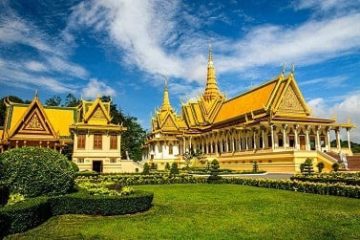
Essential Cambodia Tours
Essential Cambodia Tours 9 Days: visit Phnom Penh, Ancient Temples, Siem Reap and Angkor Wat + Ancient Rolous temples and Sihanoukville for a beach vacation
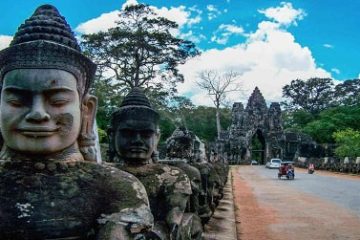
Angkor Wat Adventure Tour
Through this well planned 4 day Angkor Wat Adventure tour you will learn, explore and discover the largest religious structure in the world, Our package is all inclusive

Cambodia Insight Tour
13 day, Designed with aim to explore Cambodia's lesser known destination while traveling to must see and main visited sites such as Angkor Wat.
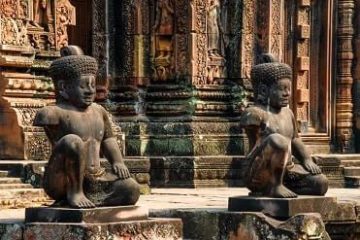
Cambodia Family Tours
A 7 day best of Cambodia suit for families with kids, you will travel from Phnom Penh to Siem Reap ( home to Angkor Way temples) and the Sihanoukville
Cambodian culture, crafts and arts
The cultural heritage and the Khmer art is a great importance for Cambodia as well as Southeast Asian art and culture and is reflected in many areas of today’s Cambodian life. Many buildings, such as the Royal Palace in Phnom Penh, are built in the Khmer architectural art and decorated with motifs such as the Garuda, a mythical bird symbol of Hinduism. Artisan goods, often made of gold or silver lamé, also show traditional motifs. The classic Cambodian dance represents legends from the lives of the gods.
Arts and crafts of Cambodia rotted to the Angkor which has stood for mysterious, unmanageably extensive temple complexes in the Cambodian forests, which can still give an idea of their former splendor today. Angkor was the culmination of a civilization that began to develop in the first centuries AD. The first Buddhist and Brahmin (Hindu) works of art have survived from the 6th century. The rise of the Khmer Empire in Angkor, on the northern edge of Tonle Sap, began in the 9th century. On the heydays of Angkorian, the Khmer ruled the entire area of what is now Cambodia, southern Vietnam, Laos and the central plain of the Chao Phraya in Thailand. They were one of the largest and most powerful peoples in Asia. The importance of the Khmer Empire was manifested in a number of gigantic temples up to the 13th century, of which the Angkor Wat is considered the largest sacred structure on earth.
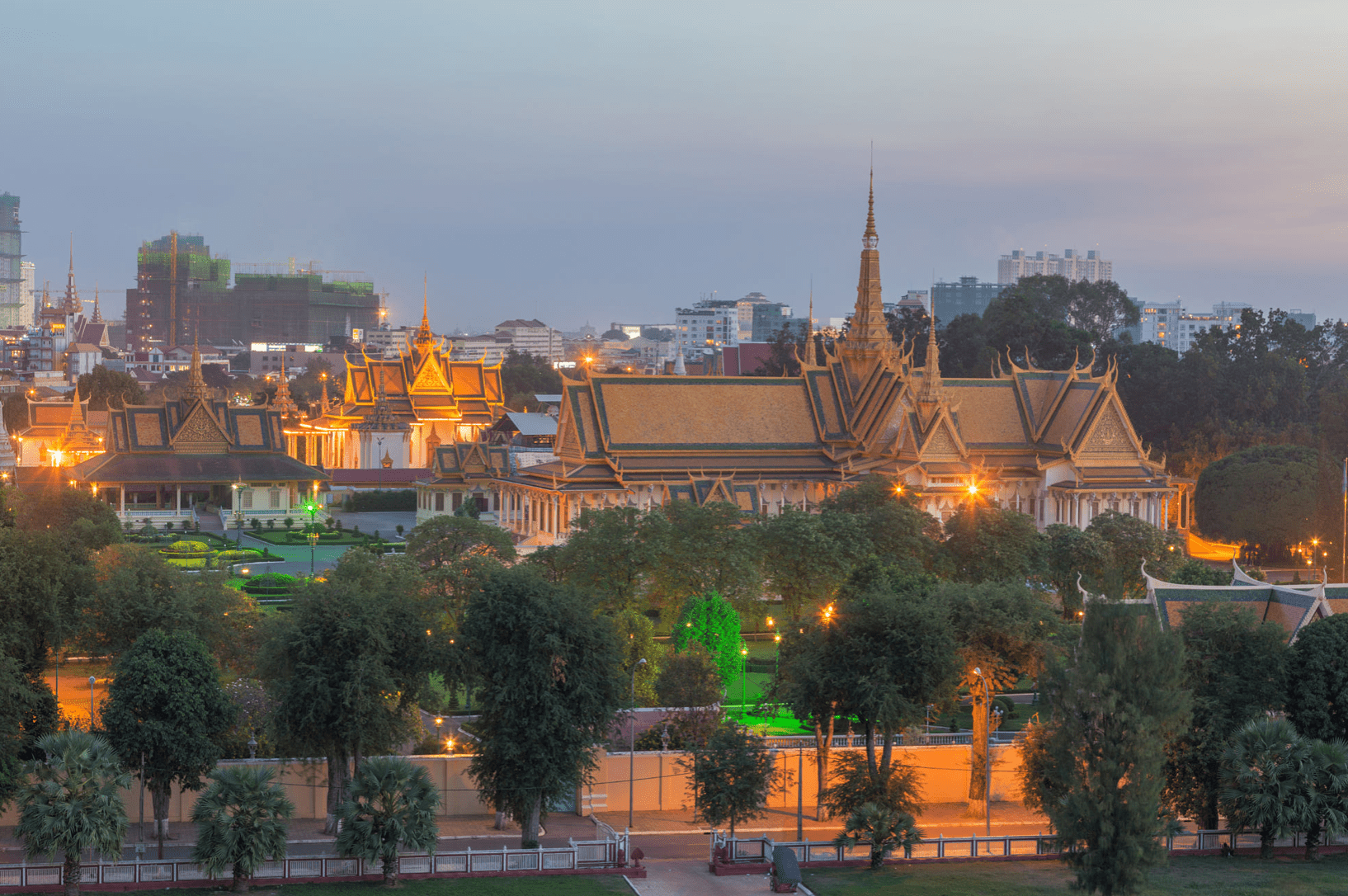
Royal Palace, Phnom Penh
What spirit is behind the overwhelming temples, which deities were they consecrated, on what social and economic structure could they be built? What was the society like that was able to achieve such services? What self-image did their kings have? These are questions that everyone who wants to get to know old Cambodia arts and crafts. Angkor Complex offers the opportunity to get an overview of the diversity of art and crafts and culture of the Cambodian, but also addresses the most important cultural and historical topics, so that visitors get an idea of the historical, social and religious context of the works.
Back in 2006, almost 140 stone sculptures, bronze figures and wooden sculptures as well as silver works and paintings will come to Bonn from the National Museum in Phnom Penh. The Indian Museum in Berlin and the Musée National des Arts Asiatiques Guimet in Paris also lend objects related to the Cambodian arts and crafts. The exhibition provides a unique overview of Cambodia’s culture, starting in the 6th century with stone sculptures from the pre-Korean kingdoms of Funan and Zhenla. The central theme, however, is the art and architecture of the Angkor period (9th-13th centuries). Questions of water management, rice cultivation and trade relations are also discussed, since they formed the basis for the country’s extraordinary wealth.
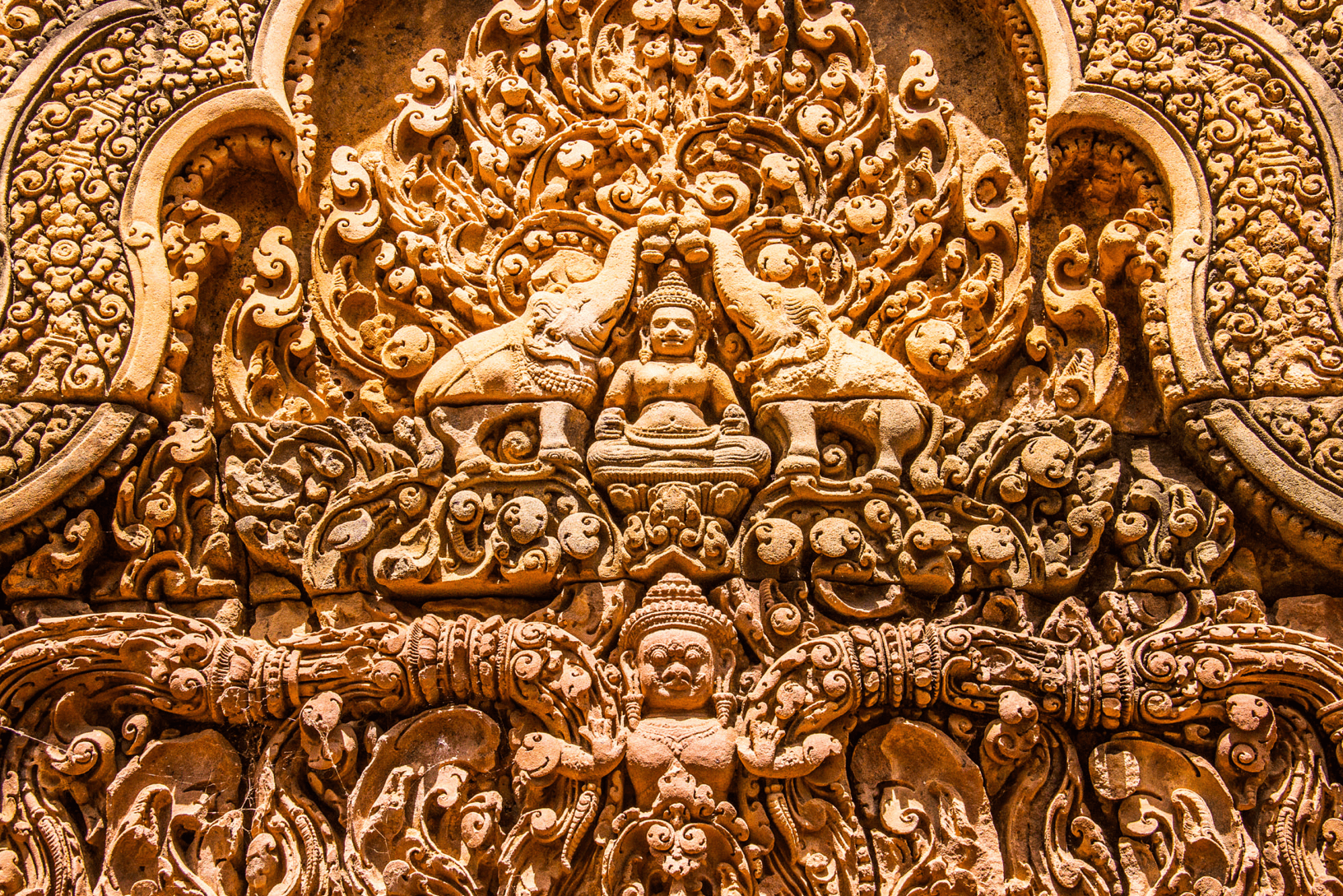
History of Cambodian Arts & Culture
Cambodian art and traditions has been shinning since the creation of Angkor dates back to the Khmer dynasty from 802–1431 AD, when many of the mesmerizing temples of Angkor were built and then was home to the Hindu, Buddhist and then artisans during the time. The term history of the arts of Cambodia inspired from what is inherited from the royal dynasties and beyond all of them, the Angkor and other historic temples and their bas reliefs. In modern days, the cultures and crafts of Cambodian arts inspired from the rock carvings and the temples around the country.
Nowadays, in Siem Reap, the city is host one of Cambodia’s oldest art forms, Sbek Thom, the Khmer term for this art, was considered, with the royal ballet Apsara and masked theater, as a sacred classical art during the Angkorian period. Sbek Thom, is an ancient form of storytelling and entertainment that features large cut-out leather figures standing between a light source and a screen or a translucent canvas. The art said to be originated from China or India in the first millennium BCE. The Sbek Thom could have been inspired by India and reached Cambodia with the influence of Indian customs and traditions. This art was best performed during the Angkorian period and dedicated at that time to the deities. It only takes place three or four times a year for specific occasions such as the Khmer New Year, the King’s birthday or the veneration of famous figures. After the fall of the Khmer Empire, the shadow theater became an artistic art form presented across the country for entertainment, while retaining its ritual dimension.
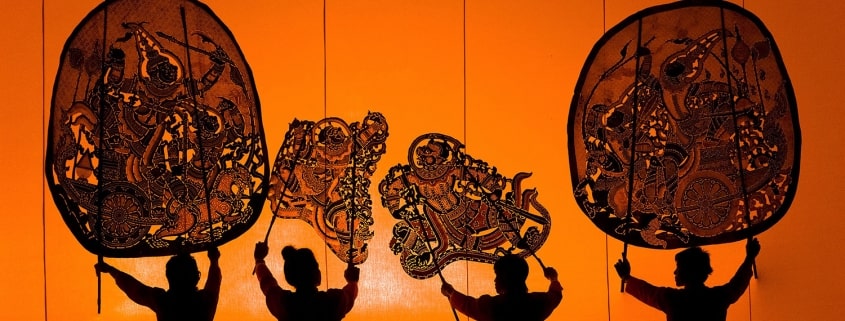
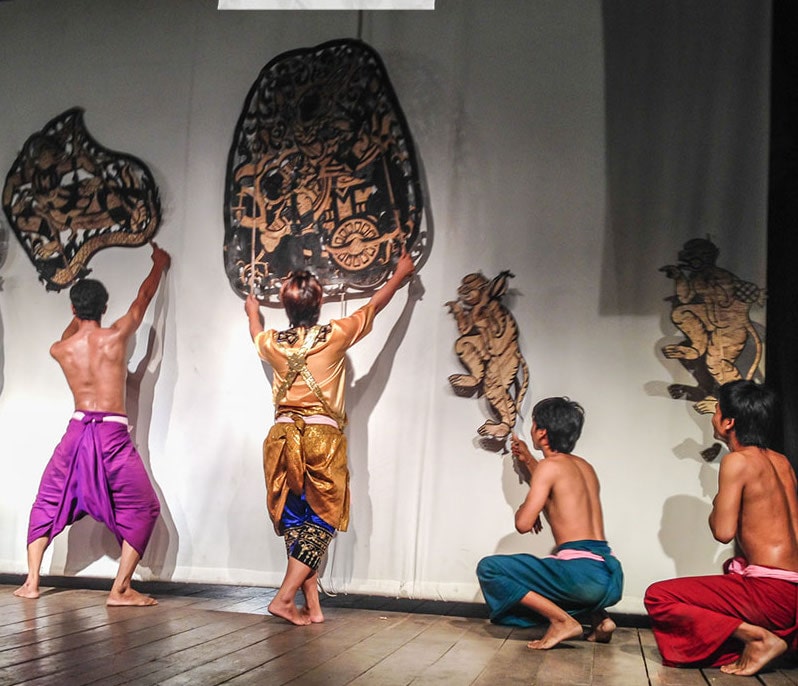
Copyright 2013-2017 Vietnamese Private Tours Ltd With Vietnam Luxury Travel



